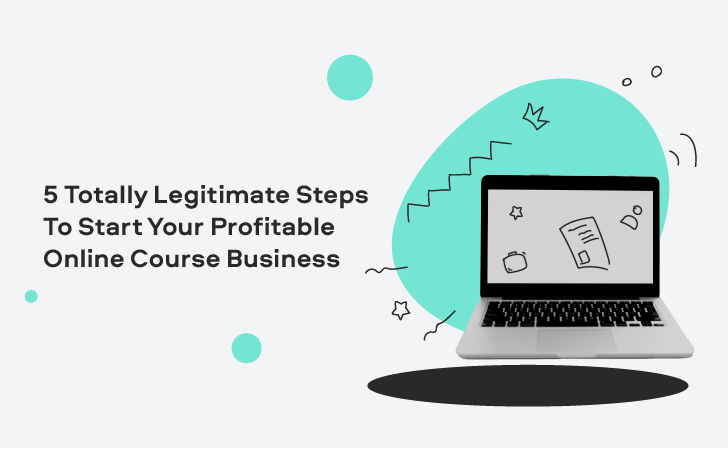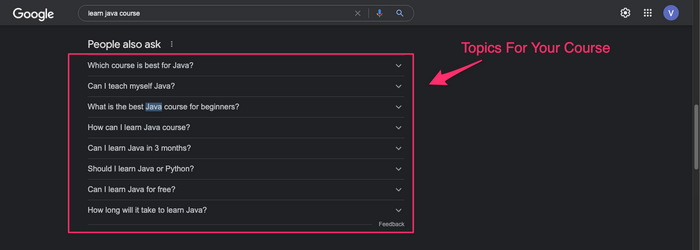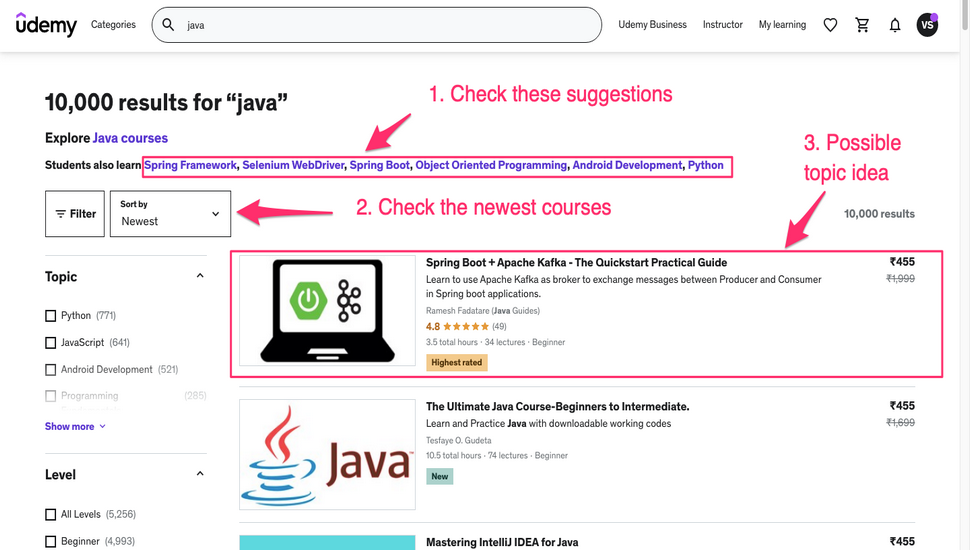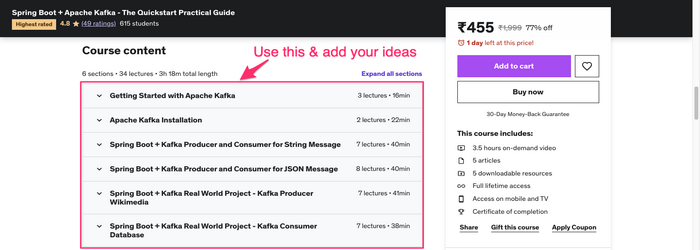We use cookies to improve the services we offer you. By continuing to browse this site, you consent to keep them in accordance with our Privacy Policy.
×We use cookies to improve the services we offer you. By continuing to browse this site, you consent to keep them in accordance with our Privacy Policy.
× 2,214
2,214
 15 min
15 min

“Can you really make money selling online courses?” You’re skeptical.
You have heard about educators who learned how to teach online and now make money while they sleep – educators who live life on their own terms, making six figure incomes month on month from the comfort of their homes.
It sounds too good to be true, right? Especially when you are slogging each day to barely make ends meet.
But this is not an urban legend. Once your online course draws a steady stream of student traffic, you can turn into an evergreen passive income machine.
And NO. You don’t have to resort to shady tactics to achieve it. Follow these five totally legitimate steps to start your profitable online course business.
You may have an excellent idea for your online course. But it’s no good if you aren’t turning it into a digital content.
So, what’s the quickest way to turn your ideas into an online course? Here are a few guidelines.
First go to Google, and type “learn + your topic + course”.
E.g.: if you are a Java instructor, type in “learn java course” and see the questions people ask. You will get a lot of ideas.

You can make an article or a YouTube video on these topics and rank on the 1st page of Google.
Identify five to ten such questions and note them in an Excel sheet.
Next, go to YouTube (in incognito mode), and type in “learn + your topic + course” . But this time, read the comments of the top videos.

E.g., you can identify that students want to learn about topics like Android Studio and Java interview tips. Likewise, identify five to ten topics that students really appreciate.
Go to Udemy and type in your topic. Here, you can check the suggestions given by Udemy.
Two, you can sort by Newest and three, filter out the highest rated or trending courses.

This way, you can pick a winning topic for your online course.
You can check out these 5 free tools to uncover the topic treasures here.
5 FREE Tools To Help You Validate Your Course Idea
Don’t want to do all this research? Here’s a comprehensive list of 150+ profitable course topics you can teach in 2022.
Now that you know what topics to teach, you need a winning course outline.
To do that, you can check the latest and highly rated courses on Udemy. Now, use this course structure and try to bring in your own ideas.

Maybe, you can explain this topic using a different angle. Or, you can teach something that is not covered in this course.
Basically, bring in your unique knowledge or experience and shape up a winning course outline.
Use a simple Word doc or Xmind to create your own course structure.
Now, with your ideas and course structure in place, start creating content, especially videos.
Why? Because videos are super engaging and help you convey your messages in the best way possible.
Here are a few questions you may have. What equipment do you need? And how to get started?
Below are some pieces of the basic equipment you need to start creating videos on your phone.
| Equipment | Purpose | Cost |
| Mic (Collar/ USB Mic) | Gives you crisp audio and removes background noise.Videos need good audio | $25-$100 |
| Tripod | Let’s you shoot steady videos from your mobile phone | $15-$50 |
| Ring Light (Choose the Best Ring Light) |
Gives good lighting. Removes shadows. | $15 – $50 |
Use these FREE apps to start the video creation process. The best part is, they are free and are very popular.
| Software | Purpose | Cost |
| Google Slides | Create slides for videos | $0 |
| Audacity | Record, edit your audios | $0 |
| Bandicam/OBS | To record computer screens /for LIVE streaming | $0 |
| VSDC | Edit videos and sync audio | $0 |
The downside however is that you need a bit of technical knowledge to use them.
But, what if you are not such a technical geek? Or let’s say like me you are camera shy.
How do you create videos? Enter Movavi.
Movavi is a universal solution for businesses, experts, creative individuals and everyone else who is keen to explore the benefits of making videos, whatever their purposes may be.
You can easily create commercials, presentations, video tutorials and other visual content for your business. It has a user-friendly interface and is easy to master – no previous editing experience required.
You can use Movavi for :
Now, unlock the goldilocks of your profitable course creation journey with Movavi.
With your course contents ready, you need to host it somewhere.
You have two options here. You can pick a marketplace like Udemy or go for a whitelabelled LMS platform. Which route should you take? Here are a list of pros and cons
| Platforms | Pros | Cons |
| Marketplace (e.g: Udemy, Skillshare) |
|
|
| Whitelabelled LMS (e.g Learnyst) |
|
|
So, if starting your own online course business is your goal, I would suggest you host courses on a secured whitelabelled LMS platform.
You need an LMS that offers protection from screen recording, video downloads and piracy. That’s where Learnyst LMS is the rock solid platform you need. Here’s why.
In short, get the early mover advantage. Upload your contents, create a website, a beautiful course sales page even before your competitors or fellow teachers think of an online course business.
You have built your course contents and website. So, job done right? Not really.
The phrase “If you build it, they will come” doesn’t really apply to marketing.
Here are some free and paid ways to get students to your website, build your email list and boost conversions.
Create a YouTube channel for your business and create videos using the topics you have identified.
Most importantly, leave the link of your course website on the Youtube description and ask students to visit your website.
For e.g: you can make a 10 min video on “Top 10 Java Selenium Interview questions for Freshers”. At the end of the video you can ask your audience to check out the YT description for a full course on Java.
This way more students will get to know your website and check your website.
For more Youtube marketing strategy, check out this: Video Content Marketing strategy
Social media platforms are ideal to market your online course in a casual and informal way to win your students’ trust.
To do this, actively participate in Facebook communities where students hang out.
To find relevant communities, type your course topic on Facebook and find the 5-10 active student groups with more than 1000 members and 50 daily posts.
Spend 30 mins each day answering questions in the group. Leave your website or relevant course links after answering the questions.
Don’t do this with the intent of promoting your courses. Do it with the intent to solve student’s queries. This will build your credibility and trust among students.
Similarly, go to Quora and answer questions. Add any relevant content links like videos or blogs that are relevant to the question.
You can create an engaging student community on Facebook. This can be a group for struggling students to connect and learn how to overcome the challenge they face.
Next, start asking questions or polls so that your students share WHAT they want.
With all the information shared by your students, you can create and market relevant courses for your students. You will be able to attract your students instead of chasing them.
Now, here is a related question. What’s better than a FB community? The quick answer is having your own student community on your website. Learnyst can help you here.
Using Learnyst, you can create your own community and manage all your student discussions. Simply signup for a free trial to try it out. Now, let’s move on to tip 4.
Using the keyword analysis process & your interaction with students to create blogs based on student pain points.
Include the search terms in the title & body of your blog, image alt texts, and in your H2 and H3 titles.
Onpage SEO & Keyword Placement On Course Websites [Pro Tips]
You can also prepare a free course or PDF guide that solves the student’s problems and share the links in your social media channels and communities that you are part of.
I would also suggest you conduct free LIVE classes to interact with your students and solve their problems.
You can easily create free courses and conduct LIVE classes on your website using Learnyst.
This way, your websites will start ranking in google and you should start getting traffic in 2-3 weeks.
Your known contacts are usually the gold nugget you might miss out on. Most of your known contacts may not know what you do.
So, do let them know about your courses and ask them to share it with people they know.
Their word of mouth can also bring in a lot of student inquiries.
Market your offers, free classes, or LIVE sessions in your WhatsApp status. This will let your contact know what you are up to and this can bring in a lot of students to visit your site. You can also consider asking for help from the best B2C marketing companies that can help you properly market your products.
You can look out for influencers who can benefit from the courses you sell. By collaborating with them for a small fee or on a commission basis, you can get a huge boost in your student traffic.
To find out influencers, go to this site called SHOUTCART and search for influencers on Facebook, YouTube, or Instagram.
Now, you can reach out to them and send an email pitch to collaborate with them. This will help you get more students to your website.
Remember to give more value to influencers in return for the promotion.
You can drive traffic to your website using Facebook ads.
Facebook ads offer multiple targeting options. You can show your ad to an audience with certain interests, demographics, and behaviors.
If you already have a client email list, You can upload your email list on Facebook to create a lookalike audience.
Facebook will use the email details to market your website to new students who have similar likes and interests.
Make sure you are offering free courses on your website. This will encourage students to sign up and you get to expand your sales funnel.
Use these steps Here are some free and paid ways to get students to your website. Next, let’s see how to get student emails.
Now that your students are on your website, your goal should be to build a trust with them & to make them sign up to your website.
You can do this by painting a story of students’ benefits & solutions on your website. List all your courses, make it complete with images, titles, syllabus & pricing details.
Also add testimonials, success case studies, FAQs to build their trust.
Attract them with a free course, PDF guides, or anything that solves their problem. This helps them trust your brand and sign up on your website.
“Another good way to collect student emails is to offer a cheat sheet that applies to the content,” said Hanah Alexander, Editor-in-Chief of TodayTesting.com. “For example, if your course is on cooking, then you might provide a free PDF cheat sheet for Top 10 Essential Kitchen Utensils for Home Chefs.”
I would also suggest you conduct free LIVE classes for your students and solve their problems. This greatly helps in building trust and relationship with your students.
Now that students trust you, your goal is to build on this trust & to create a desire in them to buy your courses.
Here are a few ways you can build trust using a 5 step email series.
Email 1: First, interact with your students. Tell them what problem you can help them solve. Ask specific questions about what this problem means to them & what they want to achieve.
Email 2: Share valuable insights. In this email, share insights like a blog or article that solves the problem you mentioned in the previous email. This establishes your authority & instills trust in your students.
Email 3:Reveal your solution. Now that your students see you as an expert, remind them that the solution to their problem lies in your course. Paint a clear vision of how their lives can be better with your courses.
Email 4: Overcome objections. Use this email to address their objections & the reasons why they think they can’t buy your course. This makes your students ready before you sell your online course.
Email 5: Sell your courses. There are many ways to do it.
So, these were all the 5 steps you need to start a profitable online course business. To recap the entire process:
You can check here for best email writing tips
You want to teach because you love your subject.
You want to share your passion for the subject with the world, enrich student’s lives and do what you love.
But, you also want to earn a bit of money. And what better way to do that than to earn passive income – so you can do what successful course creators are known for: make money from home, spend more time with your family, live life on your own terms.
The good news: By picking the right topics, creating your online course and marketing it to your students, you can earn a passive income from your own course business.